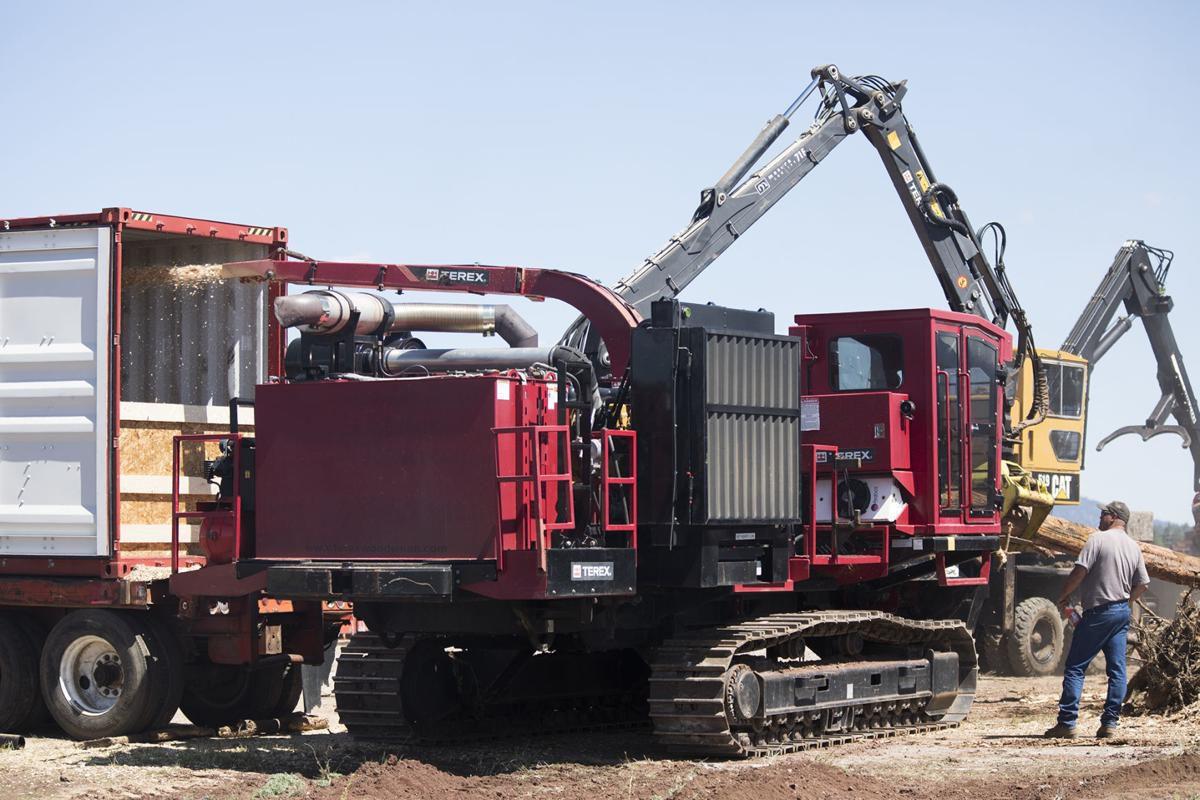A new forestry project is measuring an opportunity to address parts of the northern Arizona forest industry’s biomass bottleneck by shipping wood chips to South Korea, where it could be used to produce electricity.
As of Monday, the project has 60 shipping containers filled with wood chips waiting to be sent to South Korea, where the price of nonrenewable energy offsets the cost of using imported wood from Arizona.
The project is being staged at Camp Navajo in Bellemont where they stacked and dried the wood to prepare it to be chipped and sent overseas. This project is just in the preliminary stages, with this one-time shipment being used to see how the project could be recreated on a larger scale.
Project leads expect the wood chips will reach a port in Long Beach on Aug. 21. It will then take two weeks to reach the South Korean port of Gwangyang, according to Han-Sup Han, professor and director of the forest operations and biomass utilization at NAU’s Ecological Restoration Institute and a lead on the project.
There are still challenges to overcome in making the project larger and more long term, but all signs indicate it’s going well, said Jeff Halbrook, a research associate at ERI and another project lead.
“We need to get the transportation costs just right. We need to get the operation just right,” Halbrook said. “We’re hopeful, very hopeful, we can do this.”
U.S. Forest Service officials in northern Arizona say they hope projects which focus on forest thinning to sustain forest health will also stimulate forest industry growth. They currently face what forest officials have referred to as a biomass bottleneck: where the trees can be cut and logged, but biomass — pine needles, slash and wood chips — lacks enough people to buy or use the it once it is on the ground. Currently biomass in northern Arizona is piled and burned on the forest floor, or taken to NovoPower, a small-scale power generator in Snowflake.
This new project, testing the viability of shipping wood chips to South Korea, does not address the entire biomass bottleneck at this time, and leaves those pine needles and branches without a sizable solution. The South Korean facilities have trouble processing the pine needles and branches.
Ahn Jong Hyeun, president and chairman of JA International, the South Korean company using the wood for power generation, attended a Camp Navajo demonstration of the chipping work that was done last Friday. Hyeun said the dry wood from the Flagstaff area is “very satisfactory” for their use.
“Because carbon emission is South Korea is such a big concern, we like to use what’s available here for the situation in South Korea,” Hyeun said, his words translated to English by Han.
Han explained at a recent demonstration that JA International is looking to get half a million tons of chips per year for the next 20 years. That equates to 220 truckloads of wood from the forest every other week.
Han explained in an interview on Monday via telephone that JA International paid for the cost of rail and ship transportation in exchange for free wood in this one-time project.
Wet wood chips are slightly larger and heavier, which adds up in mass quantities, meaning it would require more containers to fill the same amount of wood chips. Additionally, wet wood chips don’t burn as well as dry wood chips in power generation, and would impact JA International’s ability to produce electricity if that is what they decide to do with the product.
“We wanted as much chips as we could get in there, and with it being this dry, we could fill those up,” Halbrook said. “If it was wet chips, if we had just fresh-cut those trees, we’d only get about half the amount of chips in there.”
Han said if the project was going to expand, it was clear they needed to increase the railroad transportation infrastructure at Camp Navajo, because the rail going through Flagstaff is too busy for a train to just stop on the tracks and wait for loading.
Additionally, with their goal of ramping up production to 220 containers every other week, they would need just as many trucks to ship the logs off the plots.
“After we’re all done, we’re all going to sit down here and say, all right, what did we learn from this?” Halbrook said. He said the intent of the conversation will be to make it bigger, faster and more efficient.
The project included collaboration from many partners to conduct the trial run. The Nature Conservancy supplied the wood from their thinning plots, BNSF provided the shipping cars, Hyundai supplied empty shipping containers, the Forest Service put in funding, Arizona Department of Emergency and Military Affairs provided Camp Navajo and NAU’s ERI oversaw the project.





